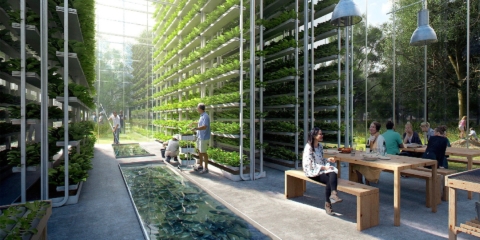Would you like to get notifications from Christian?
In December, Lawrence Livermore National Laboratory scientists achieved a significant fusion breakthrough. They used 192 lasers to ignite a fusion reaction that produced more energy than was used to trigger it. The surge ended after a fleeting moment, but its implications will last much longer. This is an incredible accomplishment, and it could mean big things for the future of fusion energy.
Fusion energy is a form of nuclear power that converts the energy released in the fusion process of two light atomic nuclei into usable thermal energy. Due to its significant advantages, it has been proposed as an alternative to traditional sources of electricity, such as fossil fuels and fission energy. Fusion energy is cleaner than other forms of energy production, produces less long-term waste, is safer because it involves no fissionable material that can be used for nuclear weapons, and can be more easily contained than fusion reactions.
The recent breakthrough in fusion energy research has been widely hailed as a significant milestone on the path to practical fusion energy. It is the first time that scientists have been able to produce more energy through fusion than was required to trigger it. This could open the door to new research into creating reactor-scale power plants to generate electricity. The implications of this breakthrough are far-reaching in terms of basic science research and practical applications for fusion energy. If the study can be scaled up and commercialized, it could address many of the world’s energy challenges, including long-term solutions for climate change and sustainable development.
There are many exciting possibilities for the future of fusion energy. This breakthrough could pave the way for new research and development efforts that would lead to more efficient and cost-effective ways of harnessing this clean, abundant energy source. With a continued focus on improving technology and reducing costs, we will likely see significant advances in practical fusion power in the coming years. From powering homes and businesses to supporting critical infrastructure and industry, fusion energy has the potential to revolutionize our energy landscape for the better. It is an exciting time for this emerging technology, and we can look forward to a more sustainable and environmentally-friendly future thanks to breakthroughs such as this one.
As we continue to advance our understanding of fusion energy, there are many exciting possibilities for its future applications. The recent breakthrough in Lawrence Livermore National Laboratory is a significant milestone that could lead to new research and development efforts for more efficient and cost-effective ways of harnessing this clean, abundant energy source. Suppose we can overcome the remaining challenges to achieving practical fusion power. In that case, it could have far-reaching benefits for our energy landscape and help us to address some of the most pressing challenges of our time, from climate change to sustainable development. It is an exciting time for this emerging technology, and I look forward to seeing where it will take us in the years ahead.
Author: Christian Kromme
First Appeared On: Disruptive Inspiration Daily
Christian is a futurist and trendwatcher who speaks about the impact of exponential technologies like AI on organizations, people, and talents. Christian tailors his presentations to your audience’s specific industries and needs.




Embracing the advancements of technology and AI can enhance our humanity. We can focus on developing our unique talents and skills by automating mundane tasks and freeing up our time. As humans, we can adapt and learn, allowing us to evolve and stay relevant in a rapidly changing world constantly.


Organizations will need to be more fluid, dynamic, and adaptable: the ability to change and adjust in response to new situations and environments. We are on the cusp of a new era of organizations, ones that are more fluid and agile and which behave like swarms we see in nature.




In the future, 3D printing and generative design will allow for products to be designed in a more decentralized manner, and production will take place closer to the customer and fully on-demand. 3D printing technology will also allow for more customization and personalization of products.


The agricultural industry is ripe for disruption. Robotics, AI, and IoT are all technologies that have the potential to radically transform the way we grow food. In combination with vertical farming, these technologies could increase the efficiency and quality of agricultural products.

A human-centered society is one that puts people first and where technology is used to unite and empower people. It is a society that values biological life and dignity above all else. It is a society that recognizes the importance of human relationships and works to strengthen them. In a human-centered society, all members of the community are valued and treated with respect.


The future of healthcare is here. New technologies like AI, IoT, big data, and smart sensors make it possible to become the CEO of your own health. Imagine that your phone can listen to your voice and AI algorithms can detect small nuances in the tone of your voice that indicate specific diseases.
